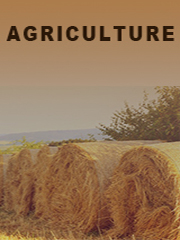Report overview
Organic farming is defined as a production system which largely excludes or avoids the use of fertilizers, pesticides, growth regulators, preservatives and livestock feed additives and totally rely on crop residues, animal manures, legumes, green manures, off-farm wastes, mechanical cultivation, mineral nutrient bearing rocks and biological pest control to maintain soil health, supply plant nutrients and minimize insects, weeds and other pests.
Organic rice is grown using natural and not chemical fertilizers, which are harmful to health and environment as well. However, producing organic rice is much more than just using natural or organic fertilizers.
Organic rice is rice that is certified by an independent body, to have been grown and processed according to set ?organic? standards. Rice fact sheets while there is no single definition for ?organic?, most definitions share common elements. For example, ?organic? as applied to most field crops generally means that:
This report aims to provide a comprehensive presentation of the global market for Organic Rice, with both quantitative and qualitative analysis, to help readers develop business/growth strategies, assess the market competitive situation, analyze their position in the current marketplace, and make informed business decisions regarding Organic Rice. This report contains market size and forecasts of Organic Rice in global, including the following market information:
Global Organic Rice Market Revenue, 2018-2023, 2024-2029, ($ millions)
Global Organic Rice Market Sales, 2018-2023, 2024-2029, (MT)
Global top five Organic Rice companies in 2022 (%)
The global Organic Rice market was valued at US$ 2131.5 million in 2022 and is projected to reach US$ 3572.3 million by 2029, at a CAGR of 7.7% during the forecast period. The influence of COVID-19 and the Russia-Ukraine War were considered while estimating market sizes.
The top three of global Organic Rice are Foodtech Solutions, Beidahuang and Yanbiangaoli, with about 16% market shares. The key consumption markets locate at China domestic and developed countries. The United States takes the market share of 13%, while EU with 14%.
We surveyed the Organic Rice manufacturers, suppliers, distributors and industry experts on this industry, involving the sales, revenue, demand, price change, product type, recent development and plan, industry trends, drivers, challenges, obstacles, and potential risks.
Total Market by Segment:
Global Organic Rice Market, by Type, 2018-2023, 2024-2029 ($ Millions) & (MT)
Global Organic Rice Market Segment Percentages, by Type, 2022 (%)
Polished Glutinous Rice(Sticky Rice)
Indica(Long-Shaped Rice)
Polished Round-Grained Rice
Global Organic Rice Market, by Application, 2018-2023, 2024-2029 ($ Millions) & (MT)
Global Organic Rice Market Segment Percentages, by Application, 2022 (%)
Direct Edible
Deep Processing
Global Organic Rice Market, By Region and Country, 2018-2023, 2024-2029 ($ Millions) & (MT)
Global Organic Rice Market Segment Percentages, By Region and Country, 2022 (%)
North America
US
Canada
Mexico
Europe
Germany
France
U.K.
Italy
Russia
Nordic Countries
Benelux
Rest of Europe
Asia
China
Japan
South Korea
Southeast Asia
India
Rest of Asia
South America
Brazil
Argentina
Rest of South America
Middle East & Africa
Turkey
Israel
Saudi Arabia
UAE
Rest of Middle East & Africa
Competitor Analysis
The report also provides analysis of leading market participants including:
Key companies Organic Rice revenues in global market, 2018-2023 (Estimated), ($ millions)
Key companies Organic Rice revenues share in global market, 2022 (%)
Key companies Organic Rice sales in global market, 2018-2023 (Estimated), (MT)
Key companies Organic Rice sales share in global market, 2022 (%)
Further, the report presents profiles of competitors in the market, key players include:
Doguet?s Rice
Randall Organic
Sanjeevani Organics
Kahang Organic Rice
Riceselect
Texas Best Organics
STC Group
Yinchuan
Urmatt
Vien Phu
SUNRISE Foodstuff JSC
Foodtech Solutions
Beidahuang
Yanbiangaoli
Jinjian
Huichun Filed Rice
Dingxiang
Heilongjiang Taifeng
Heilongjiang Julong
C.P. Group
Outline of Major Chapters:
Chapter 1: Introduces the definition of Organic Rice, market overview.
Chapter 2: Global Organic Rice market size in revenue and volume.
Chapter 3: Detailed analysis of Organic Rice manufacturers competitive landscape, price, sales and revenue market share, latest development plan, merger, and acquisition information, etc.
Chapter 4: Provides the analysis of various market segments by type, covering the market size and development potential of each market segment, to help readers find the blue ocean market in different market segments.
Chapter 5: Provides the analysis of various market segments by application, covering the market size and development potential of each market segment, to help readers find the blue ocean market in different downstream markets.
Chapter 6: Sales of Organic Rice in regional level and country level. It provides a quantitative analysis of the market size and development potential of each region and its main countries and introduces the market development, future development prospects, market space of each country in the world.
Chapter 7: Provides profiles of key players, introducing the basic situation of the main companies in the market in detail, including product sales, revenue, price, gross margin, product introduction, recent development, etc.
Chapter 8: Global Organic Rice capacity by region & country.
Chapter 9: Introduces the market dynamics, latest developments of the market, the driving factors and restrictive factors of the market, the challenges and risks faced by manufacturers in the industry, and the analysis of relevant policies in the industry.
Chapter 10: Analysis of industrial chain, including the upstream and downstream of the industry.
Chapter 11: The main points and conclusions of the report.
